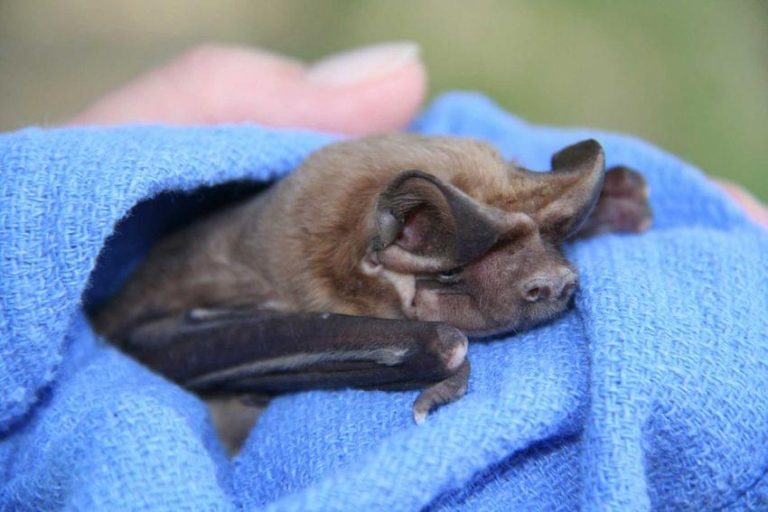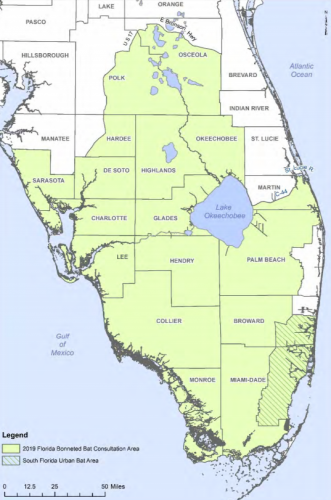The Florida Bonneted Bat
The Florida bonneted bat is a federally endangered species of bat that resides in south Florida. It’s name originated from its large distinctive ears which meet in the middle, creating a bonnet like look. First designated as endangered by the United States Fish and Wildlife Service (USFWS) in 2013, the Florida bonneted bat is thought to be one of the rarest mammals on Earth.
In September of 2019, updated consultation guidelines were released by the USFWS which expanded the consultation area to include all of southwest Florida. The guidelines also established the requirement of conducting an acoustic foraging survey for all projects greater than five acres. If the likelihood of bonneted bat roosting exits within a project area, a cavity survey must be completed to locate the bat roost. Cavity surveys are conducted for all single-family home wetland fill permits as part of the listed species survey that is required by the United States Army Corps of Engineers. Contact us to receive an acoustic foraging survey or cavity survey quote!
Little is known about the Florida bonneted bat. While it is the largest bat in Florida, it is the most elusive. Natural and man-made roosts have been located across south Florida with the majority of the confirmed roosting occurring in man-made structures. In areas around Miami, the bonneted bat has even been found roosting in barrel roof tiles of family homes. Natural roosts are generally located in dead and hollow tree cavities, with the cavity entrance being more than five meters off the ground. For this reason, when a tree cavity is located on a property prior to development, the cavity is inspected using a camera to asses use by animals. Florida bonneted bats can fly large distances to forage for insects and are generally very high fliers.
Another unique characteristic of the Florida bonneted bat is its distinctive low frequency hunting call. Like all bats in North America, the bonneted bat hunts using echolocation, but is unique in that it’s ultrasonic frequencies can be so low that it can be heard by people. This unique low call is what allows the ultrasonic microphones to identify Florida bonneted bats in a study area.
The consultation guidelines can be found here.



